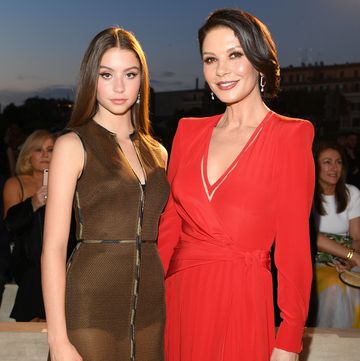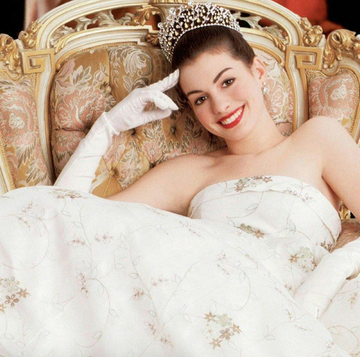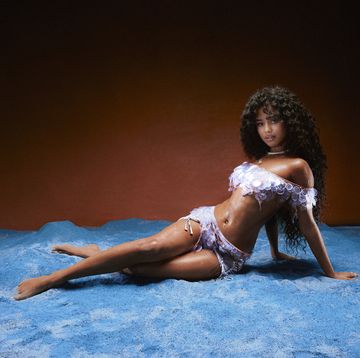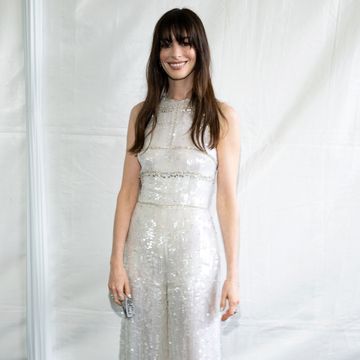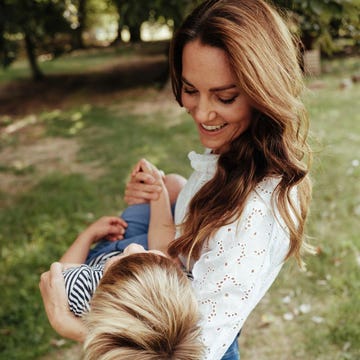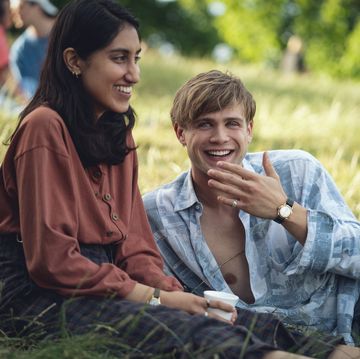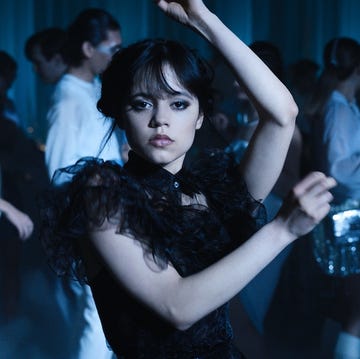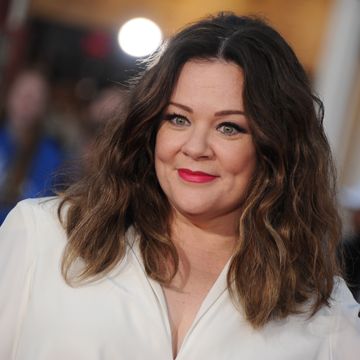After years of suffering from chronic pain and depression, Scarlett Curtis finally felt well enough to wear something other than her pyjamas, and discovered that looking good and feeling good are more connected than she realised...
(Picture by Jan Welters)
For a very long time, clothes were pretty much the last thing in the world I could think about. The wardrobe of someone who is ill, sad, or doesn’t tend to leave the house very much can be a sorry affair. For years I would change, every morning, out of my nighttime pyjamas into my daytime pyjamas to ready myself for yet another day of being bed-bound and in pain, resulting in a nightwear collection that outgrew the bottom drawer and required an entire wardrobe for itself.
If our teens are a practice run for the rest of our lives, a chance to get all the bad outfit choices, alcohol poisoning and painful young romances out of the way before emerging into womanhood with an armour of life tools and nice boots, mine left me entirely unprepared.
At 14, I was left in chronic pain after an operation on my back went wrong. Three years of not being able to walk much further than the end of my road (and it’s not a very long road) were followed by two years of crippling depression and anxiety, which once again flung
me into a petrified, bed-bound state. In a few weeks, I went from being a ‘normal’ teenage girl on a constant mission to see how short a skirt I could get away with and saving up for a new pair of Topshop hotpants (with ‘pants’ being the operative word), to a miserable recluse barely discernible in a puddle of baggy grey clothes.
Day after day in my bedroom, I experienced fashion vicariously via the internet and TV. I would spend hours artfully curating Pinterest boards of everything I would wear once I got ‘better’. My walls were covered with collages of beautiful things from
the ‘real world’ that I yearned for. One thing my years of relative seclusion did not prepare me for was how to dress myself. I had missed years of experimenting with what fashion meant to me, that reckless and necessary process of deciding what your clothes are going to say about you, what face you’re going to show to the world. Anything I knew about clothes came from the TV shows or films I was obsessed with, and the reality of dressing for a world where my clothes were suddenly a statement about my personality felt daunting.
It’s easy to think of clothes as things that only touch the surface, ignoring the reality that every decision that we make in the early hours of each morning is a statement, a shout into the void about who we are or who we want to be. Our clothes are the chainmail we put on daily to arm ourselves against the battle that is life and, as I begin to transition back into normal life, no longer confined to the prison of mental or physical illness, I find myself struggling with this very connection; the unbreakable bond between how I feel and what I’m wearing.
For a long time, the way I dressed was defined by my illness. The agony in my back meant any fabric touching it felt like razor blades and as a result my wardrobe became a symbol of my discomfort. Morose black jumpers to drown my aching body, black leggings, baggy T-shirts and pyjama shorts were my go-to ensemble. When I did leave the house, I felt an aggressive need to mask the sadness of what I was going through, to wear a disguise so no one knew how bad things were inside. I wore a headband with cat ears every day for a year, in the misguided belief that comical headwear would distract from the angsty brain underneath. At this point, I was in school part-time, and as you can imagine, my fondness for animal-themed headwear and year-round Christmas jumpers didn’t do wonders for my social life.
At 19, having spent six years watching nothing but Friends, Girls and Sex and the City, I became convinced the only thing I needed to get ‘better’ was to move from London to New York. I set off for the most fashionable city on the planet armed with 10 pairs of PJs, three Christmas jumpers and absolutely no idea about how it was going to turn out. Now, at 20, studying English Literature at NYU and living in the West Village, I’ve had a year and a half of frozen winter nights, 99-cent pizza, and a realisation that ‘better’ is something far more transient and undefinable than I’d ever previously imagined. I find myself still fairly anxious, but happier and stronger than I’ve been in years.
Weaning myself off my ‘sick’ wardrobe has been a challenge. It started pretty much as soon as I moved to New York, the simultaneous dawning realisation that I was in fact not going to be able to wear pyjamas to class and that going to university in the city meant most students looked more like they’d just walked off a runway than out of a bedbug-ridden dorm building. For the first few months all I wanted was to look like everyone else. I spent hours scouring Instagram and Facebook, trying to figure out how the women I admired – Lena Dunham and Mindy Kaling – did this ‘style’ thing. I felt I could manage to pull together an outfit once in a while, but the trouble with dressing oneself seemed to be that you had to do it every day. I found an outfit I liked: a black denim skirt and a black top from Topshop, which I wore almost daily, falling back to my baggy jumpers any time it was in the wash.
I slowly began to find a few more things I felt comfortable in. A black Bella Freud Ginsberg Is God jumper, a Topshop denim dress, and an American Apparel co-ord that tricked me into feeling like I was wearing pyjamas.
I still find shopping stressful. The overwhelming number of options and bright lights make me want to give up and run back home. But, much like any sport, the more I practice, the better I get, and the thrill of walking down the street in a brand new pair of pompom-adorned silver shoes is worth braving the intimidating SoHo crowds for.
My life is changing. I have a crush, I go on dates, I have new friends and a cafe I like to go to on the weekends. All these things require clothes and a million tiny decisions on my behalf, of who I’m going to be now that the darkness is over.
Two months ago, in a fit of desperation to somehow speed up the development on my personal taste, I bleached my hair pastel pink, and a week later bought a burgundy corduroy coat with a fluffy blue hood. As the bleach permeated my scalp, I felt a lurch of regret. I’ve always had brown hair – I am a person with brown hair. Without my brown hair, I was no longer going to look like me. But as the dye washed out and my new candyfloss locks emerged, it dawned on me, probably too late, that I really did have the freedom now to look like whoever I wanted to.
I also started looking outwards and realised all the women around me who I assumed came out of the womb knowing exactly how to dress were also making decisions every day about what they wore – and that those decisions, even if only in the smallest way, were affecting how they felt as they lived their lives. I have by no means figured out my sense of style, and the overwhelming volume of pyjamas and knitwear still outbalances the rest of my wardrobe, but I’m on my way to understanding the kind of person I want to be, and it’s up to me to discover exactly what she wears.
Words by ELLE New York editor Scarlett Curtis



